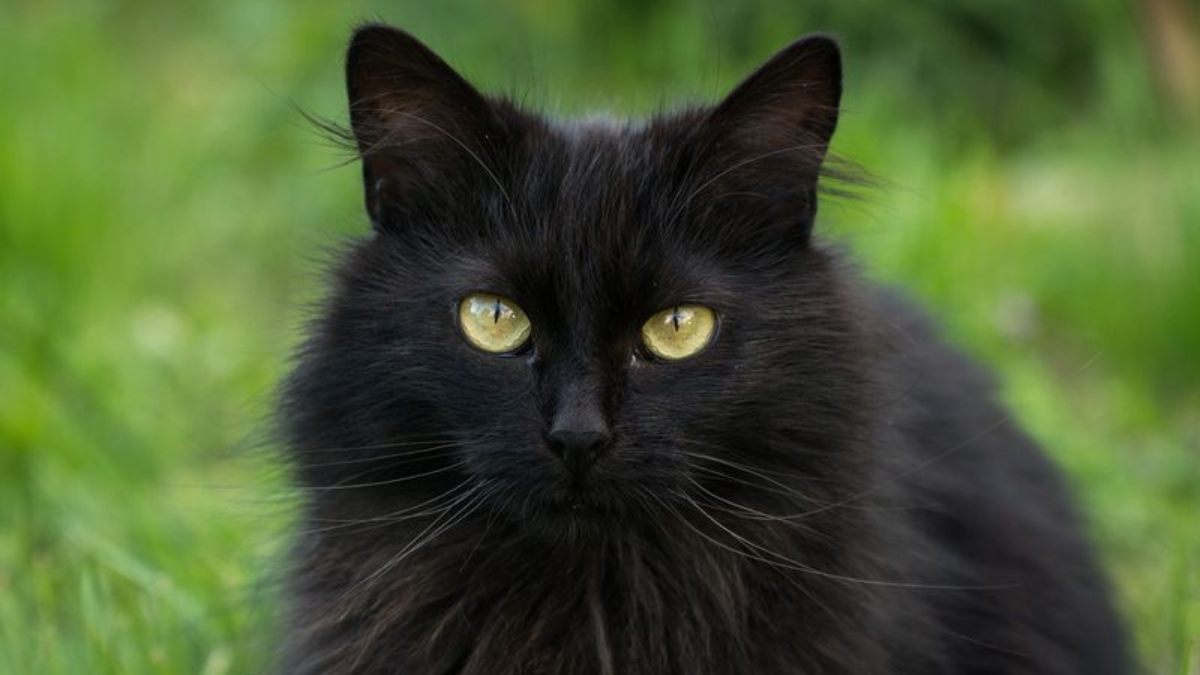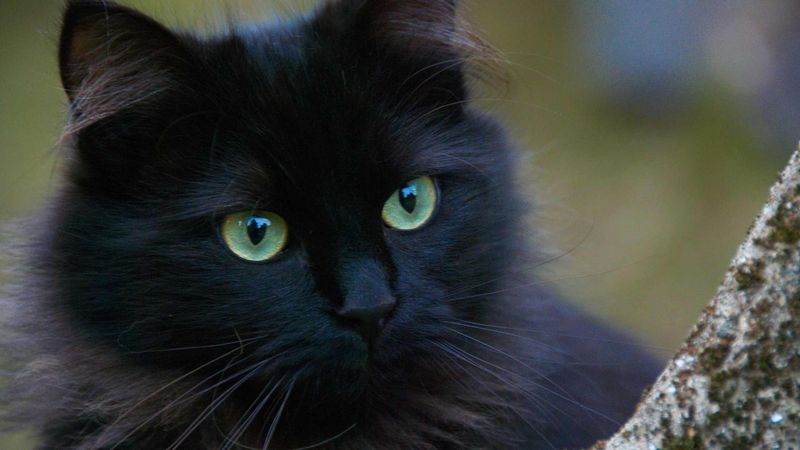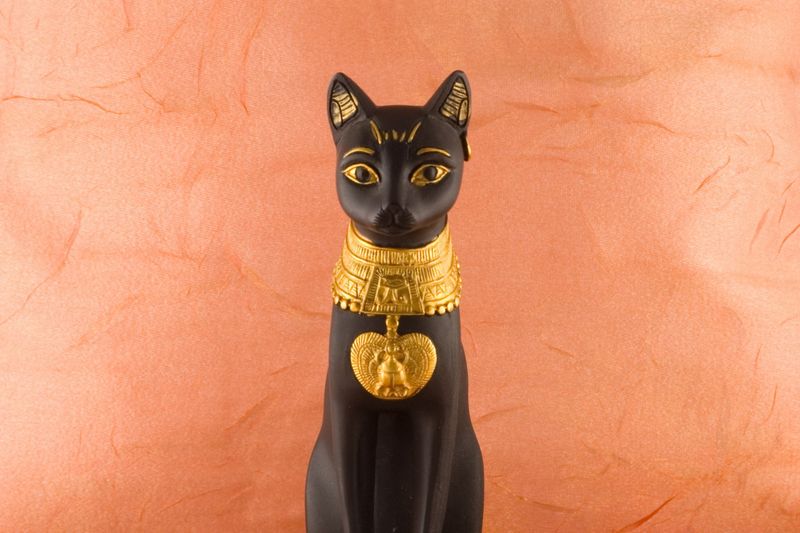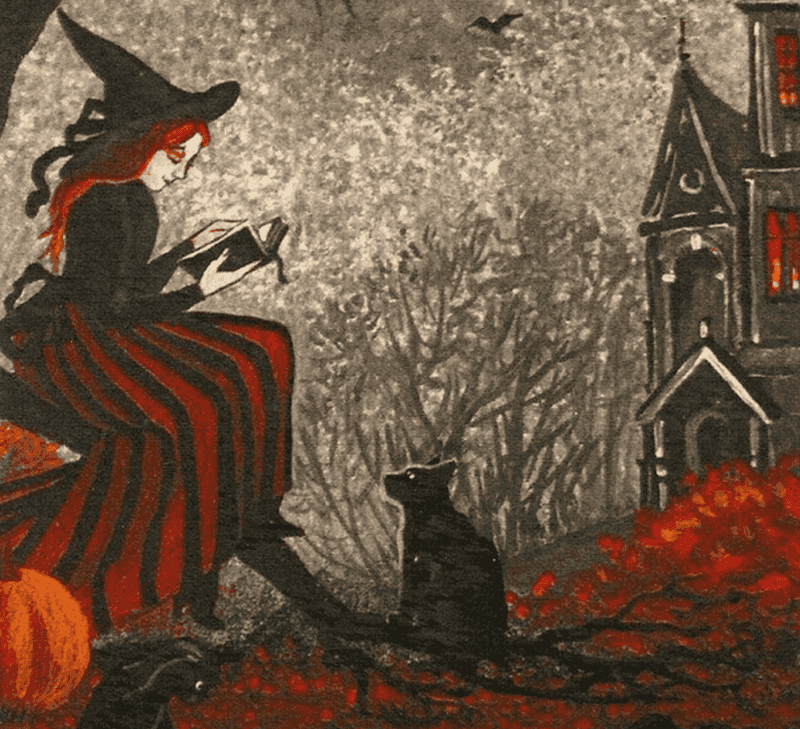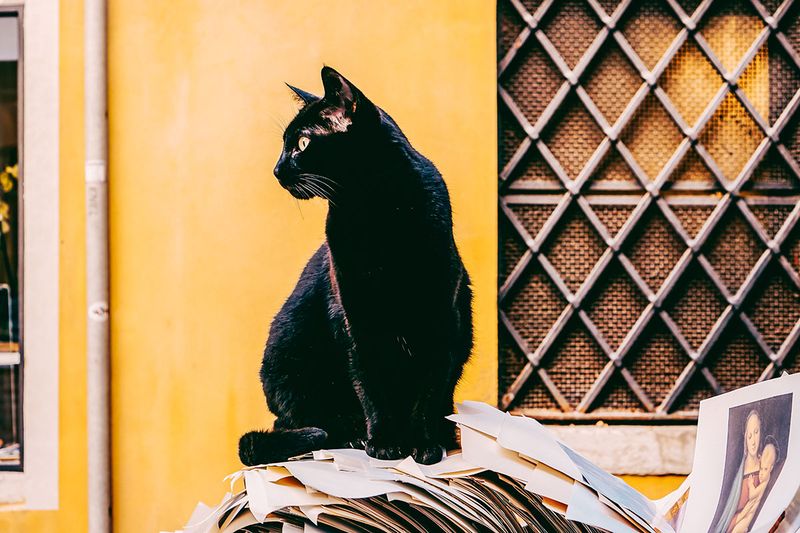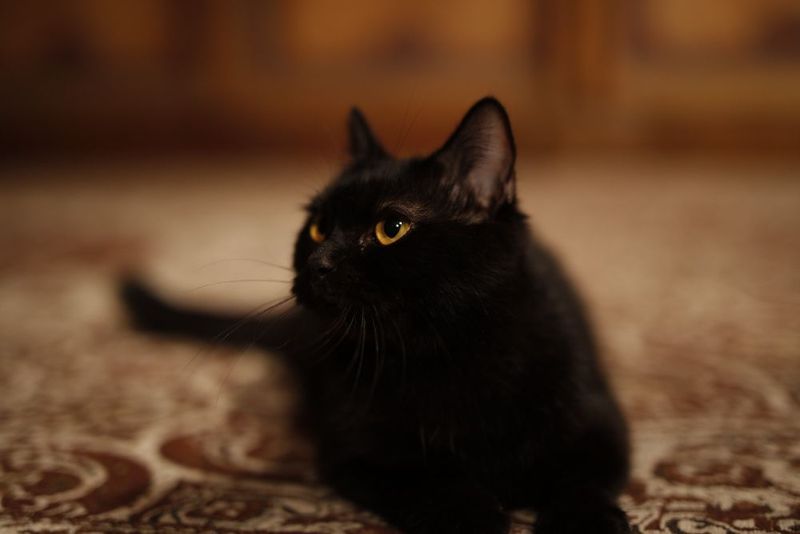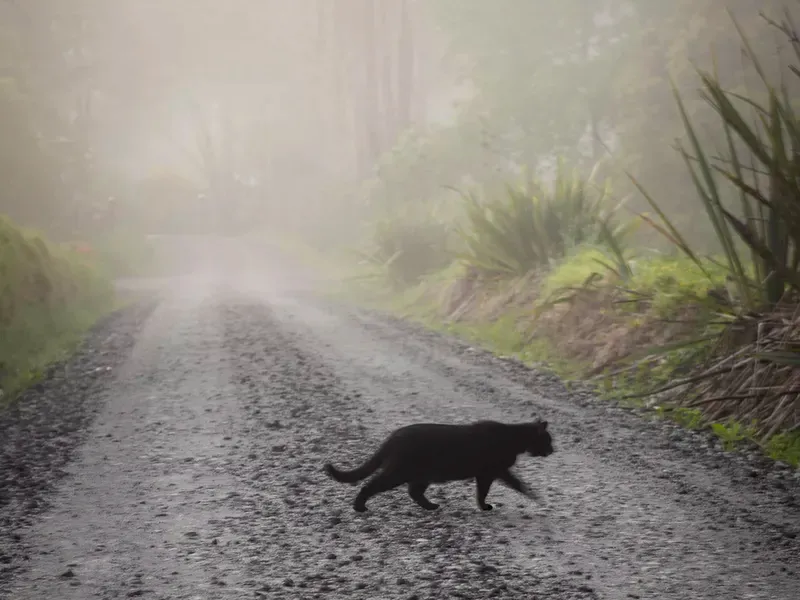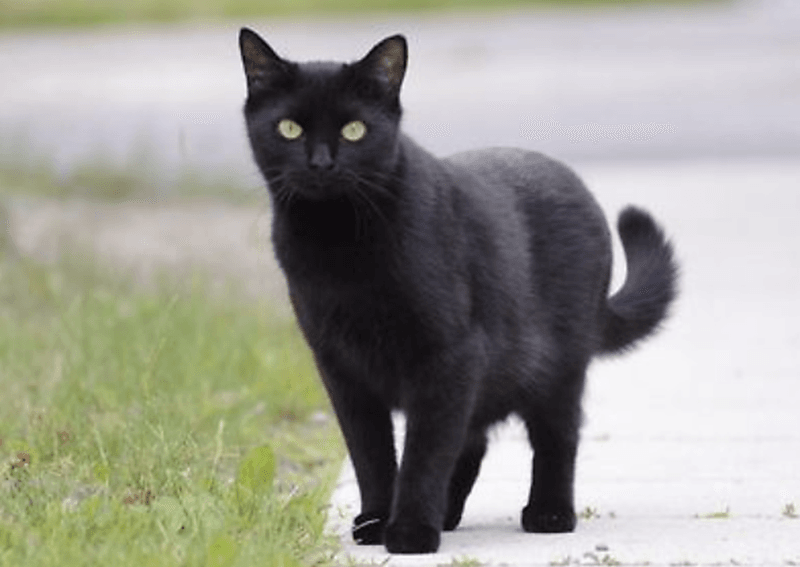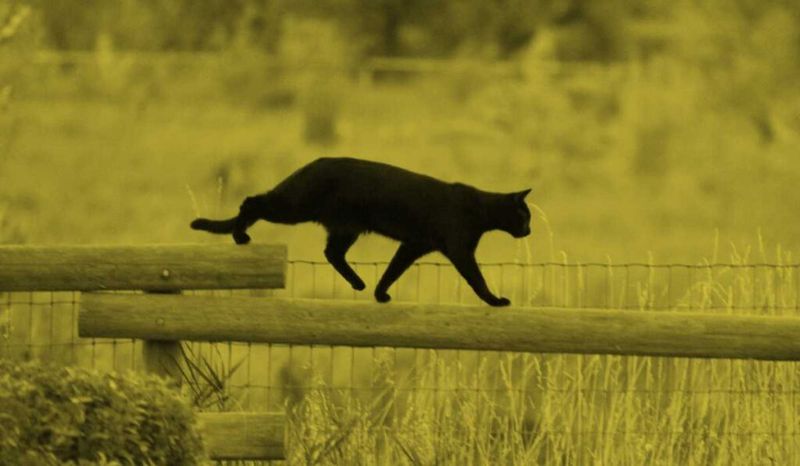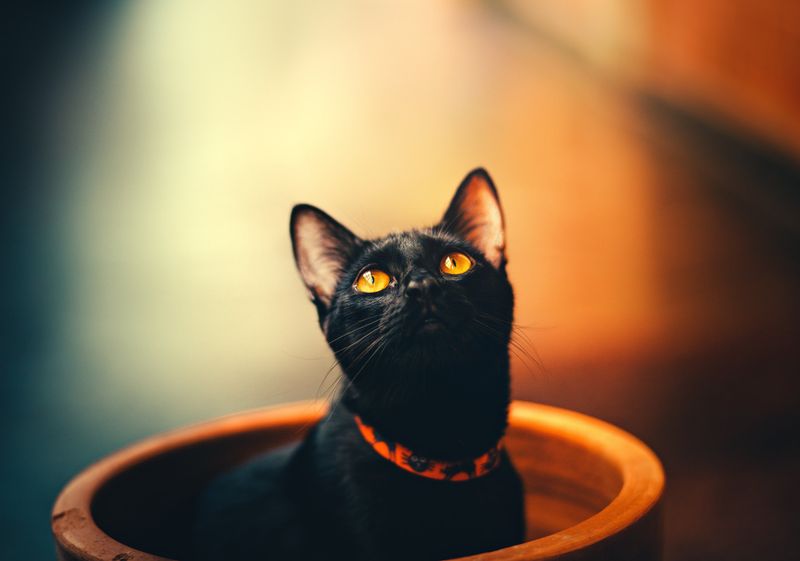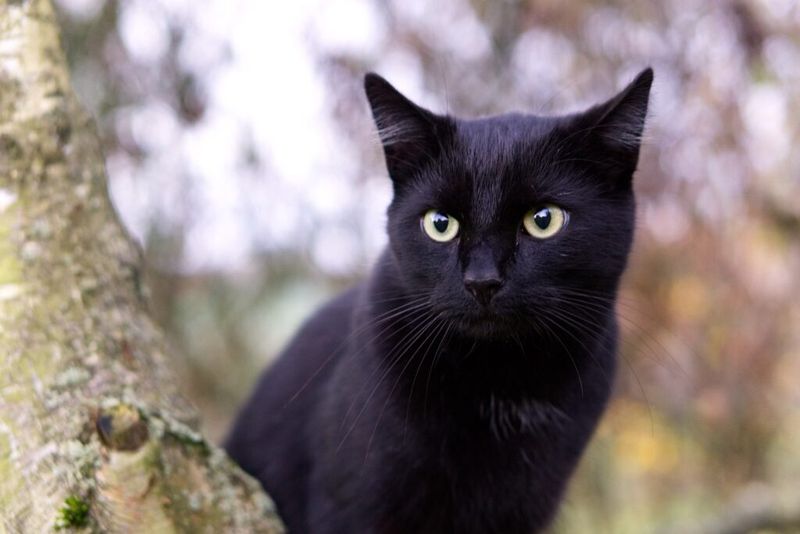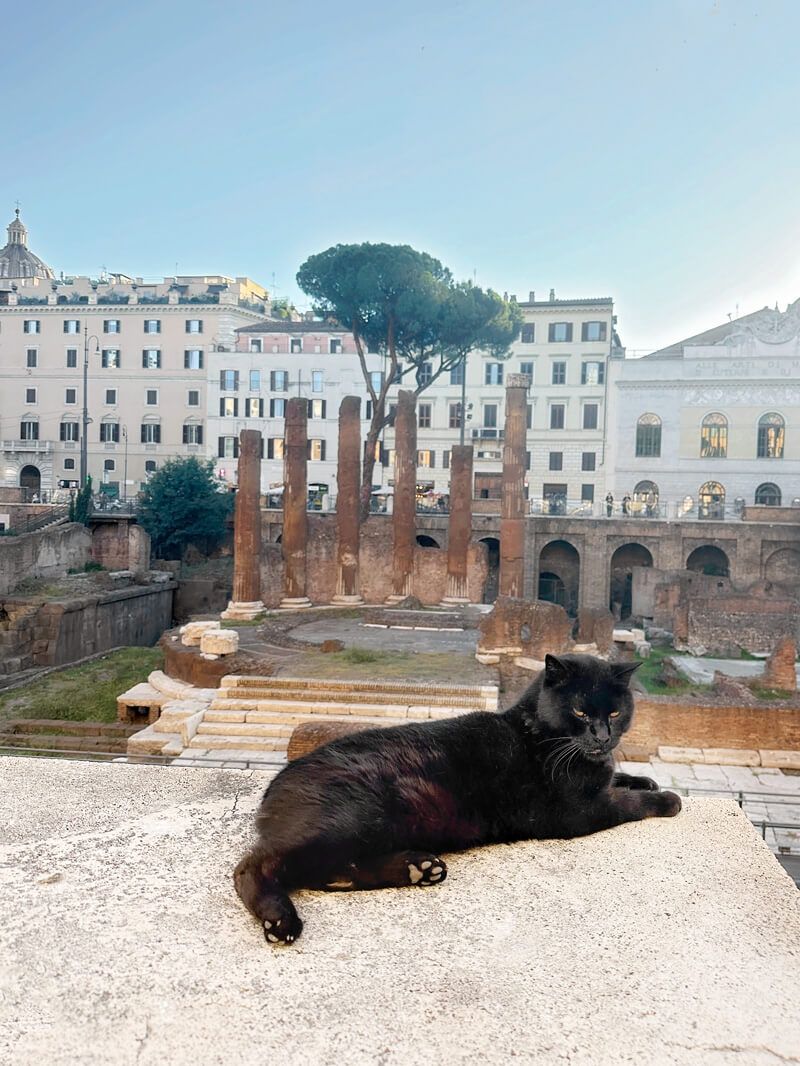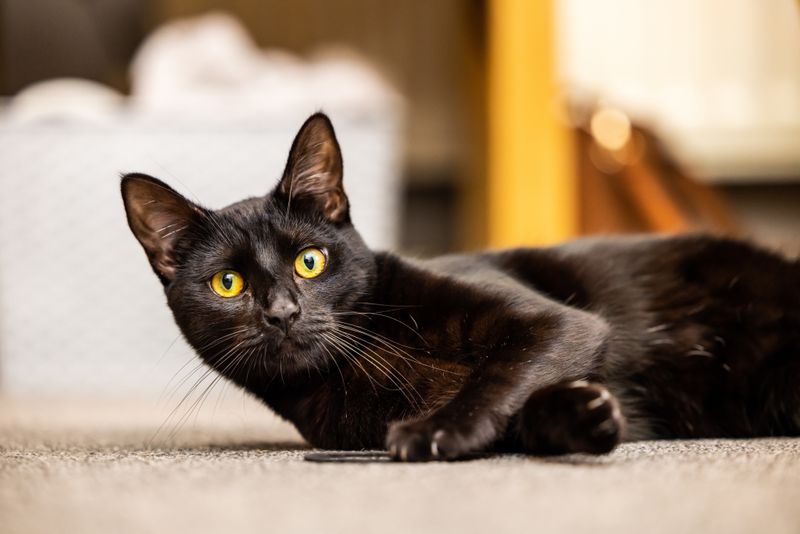📖 Table of Content:
- 1. Scotland’s Ghost Cat That Steals Souls
- 2. Egypt’s Worshipped Feline Goddess
- 3. France’s Magic Cat That Brings Riches
- 4. Japan’s Black Cat = Good Luck
- 5. England’s Witches and Their Cats
- 6. Italy’s Cat That Warns of Death
- 7. Ireland’s Mysterious Spirit Cat
- 8. Germany’s Bad Luck Cat Crossing
- 9. Russia’s Lucky House Cat
- 10. India’s Path-Crossing Curse Cat
- 11. America’s Spooky Halloween Cat
- 12. China’s Protector from Evil
- 13. Brazil’s Witchcraft Cat Myth
- 14. Finland’s Graveyard Cat Omen
- 15. Rome’s Black Cat of Chaos
- 16. Pirates’ Good Luck—or Curse—Cat
Black cats have long captured the human imagination, walking the line between myth and reality. Their dark fur and piercing eyes have inspired countless stories, often filled with mystery and magic. Across cultures, they are symbols of both luck and fear.
In some places, black cats are cherished as protectors or bringers of wealth. In others, they are seen as omens of misfortune or servants of witches. These shifting beliefs reflect deep-rooted cultural values and ancient superstitions.
From ancient civilizations to modern tales, the black cat remains a powerful symbol. Its image appears in everything from sacred rituals to seafaring superstitions. Whether loved or feared, this feline’s legend continues to grow.
1. Scotland’s Ghost Cat That Steals Souls
The Cat Sìth lurks in the misty Scottish Highlands, waiting to claim the souls of the recently deceased. Standing larger than ordinary cats with a white spot on its chest, this supernatural feline visits homes where someone has died before burial.
Highland families developed elaborate distractions to protect their loved ones’ souls. They banned all cats from the room, played loud games, and scattered catnip throughout the house to divert the Cat Sìth’s attention.
Farmers believed leaving a saucer of milk for the Cat Sìth on Samhain (Halloween) would bring blessings, while those who neglected this offering risked having their cows’ milk stolen by the creature.
2. Egypt’s Worshipped Feline Goddess
Ancient Egyptians elevated black cats to divine status through their worship of Bastet, a powerful goddess with the head of a cat and body of a woman. Killing a cat—especially a black one—was considered a capital crime punishable by death.
Families fortunate enough to have a black cat believed Bastet’s protection filled their homes. When family cats died, owners shaved their eyebrows in mourning and mummified their feline companions with elaborate ceremonies.
Temple priests kept thousands of black cats as sacred animals. Archaeological discoveries have unearthed massive cat cemeteries containing millions of mummified felines, demonstrating the extraordinary reverence Egyptians held for these mysterious creatures.
3. France’s Magic Cat That Brings Riches
French villagers once whispered about Le Matagot, a spirit-cat that brings fortune to anyone who treats it with special care. Catching this magical black feline required a bizarre ritual—you had to lure it with a plump chicken, then carry it home without looking back or speaking a single word.
Once home, the Matagot demanded royal treatment. The first bite of every meal belonged to the cat, and it required a comfortable bed at the foot of its owner’s mattress.
In return for this special treatment, the Matagot would deliver a gold coin to its owner each morning. Farmers believed these cats protected grain stores and brought abundant harvests to those who showed them proper respect.
4. Japan’s Black Cat = Good Luck
Japanese culture stands apart from Western traditions by celebrating black cats as symbols of prosperity. The Maneki Neko (beckoning cat) figurine, often depicted in black, sits in shop windows with a raised paw, inviting good fortune and customers inside.
Single women seeking romance particularly treasure black cats. An old Japanese saying claims that owning a black feline will attract numerous suitors to a woman’s door.
Sailors’ wives kept black cats to ensure their husbands’ safe return from dangerous sea voyages. The cats were believed to have power over the weather and could prevent storms from sinking ships. Even today, many Japanese businesses display black cat charms to ward off financial trouble.
5. England’s Witches and Their Cats
During England’s witch trial era, black cats became feared as witches’ familiars—supernatural helpers who carried out dark magic. The infamous witch hunter Matthew Hopkins documented cases of supposed witches transforming into black cats to sneak into neighbors’ homes.
King Charles I considered his black cat so lucky that when it died, he lamented, “My luck is gone.” The very next day, he was arrested and later executed.
Yorkshire fishermen’s wives kept black cats to ensure their husbands’ safety at sea, while sailors considered it extremely lucky if a black cat approached their vessel. However, if the cat only walked halfway aboard before leaving, the ship was doomed to sink.
6. Italy’s Cat That Warns of Death
Italian folklore warns that a black cat’s sneeze brings good fortune, but hearing one meow near a sickbed signals approaching death. Rural Italian families once placed black cats in the rooms of dying relatives to absorb evil spirits.
In Venice, black cats were so associated with the devil that during medieval times, nearly all were killed. This led to an explosion in the rat population, which some historians believe contributed to the devastating spread of the Black Death plague.
Despite these dark associations, modern Italian sailors consider black cats lucky charms. Fishermen’s families traditionally kept black cats at home, believing they would use their supernatural powers to protect men at sea from storms and drowning.
7. Ireland’s Mysterious Spirit Cat
The Cat Sidhe of Irish legend is a black cat with a white chest spot. It’s believed to be a witch who can shift between human and feline form nine times. On the final transformation, the change becomes irreversible.
Rural families feared the Cat Sidhe would steal the souls of the recently deceased before they could properly pass to the afterlife. To prevent this, families kept vigil over dead bodies, banished all cats from the wake room, and placed distracting games like riddles and music around the corpse.
On Samhain (Halloween) night, Irish households traditionally left a saucer of milk outside for the Cat Sidhe. Those who showed this respect received blessings, while those who didn’t risked having their cows run dry.
8. Germany’s Bad Luck Cat Crossing
In the world of German superstition, black cats are more than shadows—they’re omens with direction. A right-to-left crossing means trouble lurks ahead. But left to right? That’s fortune walking by.
Bavarian farmers once believed black cats born in May carried special powers. These “May cats” were thought to be witches in disguise and were often driven away from rural communities during planting season.
Many German families still turn a silver coin in their pocket when a black cat crosses their path. The metal is believed to absorb any potential curse. In mining communities, seeing a black cat before entering the mines was considered such a terrible omen that workers would refuse to start their shift.
9. Russia’s Lucky House Cat
In many Russian homes, a black cat leads the way. Before a family steps inside, the cat crosses the threshold, believed to chase away dark spirits. It’s a quiet ritual of welcome and protection.
The Russian Blue breed, often born with black coats that later lighten, was particularly prized among Russian nobility. Czar Nicholas II kept several black cats in the palace as protectors against evil spirits and assassination attempts.
Russian sailors shared this positive view of black cats. Fleet commanders often kept black cats aboard their ships for luck in battle and safe navigation. The tradition continues today—many Russian businesses place a black cat figurine near the entrance to attract prosperity.
10. India’s Path-Crossing Curse Cat
Throughout India, encountering a black cat crossing your path is considered one of the worst possible omens. Many people will cancel journeys, postpone important meetings, or return home to restart their day if they experience this dreaded sign.
Hindu mythology connects black cats to Shashti, a goddess associated with children and childbirth. Pregnant women are especially warned to avoid black cats, as their presence is thought to bring complications during delivery.
In some rural communities, families keep a black cat to absorb negative energy and protect household members from the evil eye. When illness strikes, the cat is believed to take on the sickness, sacrificing one of its nine lives to save its human family.
11. America’s Spooky Halloween Cat
Black cats became Halloween icons in America through a blend of European witch trial folklore and commercial marketing. During the Salem witch trials, these felines were believed to help witches with their spellcraft, cementing their spooky reputation.
The Halloween-black cat connection strengthened during the early 1900s when greeting card companies featured arched-back black cats as popular holiday imagery. These cards spread the superstition nationwide, making black cats synonymous with the holiday.
Animal shelters across America now refuse to adopt out black cats during October. This protective policy was developed after reports of cats being adopted for Halloween pranks or rituals, then abandoned or harmed. The stigma has real consequences—black cats remain the least likely to be adopted from shelters.
12. China’s Protector from Evil
In the tales of old China, black cats aren’t feared—they’re honored. Their inky coats are believed to trap evil spirits before they reach the family. Many homes still welcome them as loyal protectors.
Black cats hold special significance for sailors in southern Chinese coastal regions. Fishermen’s wives keep black cats at home to ensure their husbands’ safe return from sea voyages. The cats are believed to use their supernatural powers to calm storms that might endanger fishing boats.
Young women seeking husbands were once advised to feed black cats to attract good marriage prospects. The practice involved speaking their wishes to the cat while offering special treats, as black cats were thought to carry messages to matchmaking deities.
13. Brazil’s Witchcraft Cat Myth
Deep in the heart of Brazil, black cats are more than just mysterious creatures—they are keepers of ancient magic. Legend whispers that their bones hold the power to vanish from sight, but only those who dare brave a dark ritual can claim this gift.
The process requires placing a live black cat in a pot of boiling water at midnight during a full moon. After the flesh dissolves, the person must place each bone between their teeth until finding the one that makes them disappear from mirrors.
In Afro-Brazilian Macumba and Candomblé traditions, black cats are considered sacred to several powerful orixás (spirits). Practitioners believe these cats can see between worlds and warn of spiritual danger. Many Brazilian homes keep black cats to absorb negative energy from envious visitors.
14. Finland’s Graveyard Cat Omen
According to Finnish tales, black cats haunt graveyards, absorbing the spirits of the dead. With every soul collected, their mystical strength grows, linking them forever to the realm beyond.
Encountering a black cat in a Finnish cemetery was considered a message from recently departed loved ones. The direction the cat ran after being spotted would indicate whether the message was positive or a warning.
Rural communities once believed these cats could predict weather patterns. A black cat washing behind its ears signaled approaching rain, while excessive playfulness foretold storms. Finnish sailors particularly valued black cats with extra toes (polydactyl), believing they possessed superior abilities to calm rough seas.
15. Rome’s Black Cat of Chaos
Ancient Romans viewed black cats with complicated superstition. While cats generally were valued for controlling rodents, black cats specifically were associated with the goddess Diana, ruler of the moon and the underworld.
A black cat appearing at Roman military camps before battle was considered a dire warning. Commanders would sometimes postpone attacks if such an omen appeared. However, finding a black cat near temples dedicated to Diana was considered highly fortunate.
Rome’s Largo di Torre Argentina ruins now host hundreds of cats, including many black ones. This ancient site where Julius Caesar was assassinated has become a sanctuary for stray cats. Locals believe these felines are reincarnations of ancient Roman spirits guarding the historic grounds.
16. Pirates’ Good Luck—or Curse—Cat
Sailors of the Golden Age of Piracy kept black cats aboard their vessels as living good luck charms. These feline crew members received special treatment, with captains ensuring they were well-fed and comfortable to maintain their blessing.
The direction a black cat walked on deck carried significant meaning. A cat walking toward a sailor brought good fortune, while one walking away signaled bad luck approaching. If the ship’s black cat jumped overboard, pirates believed the vessel was doomed to sink.
Blackbeard’s flagship, Queen Anne’s Revenge, reportedly kept multiple black cats aboard. When his ship finally sank, legends claim the cats disappeared the night before—a warning the notorious pirate fatally ignored. Modern naval vessels continue the tradition of keeping a ship’s cat for luck.
